The 2020 Ducati Panigale V2: First Ride and Review
We track-tested Ducati’s glorious new superbike.
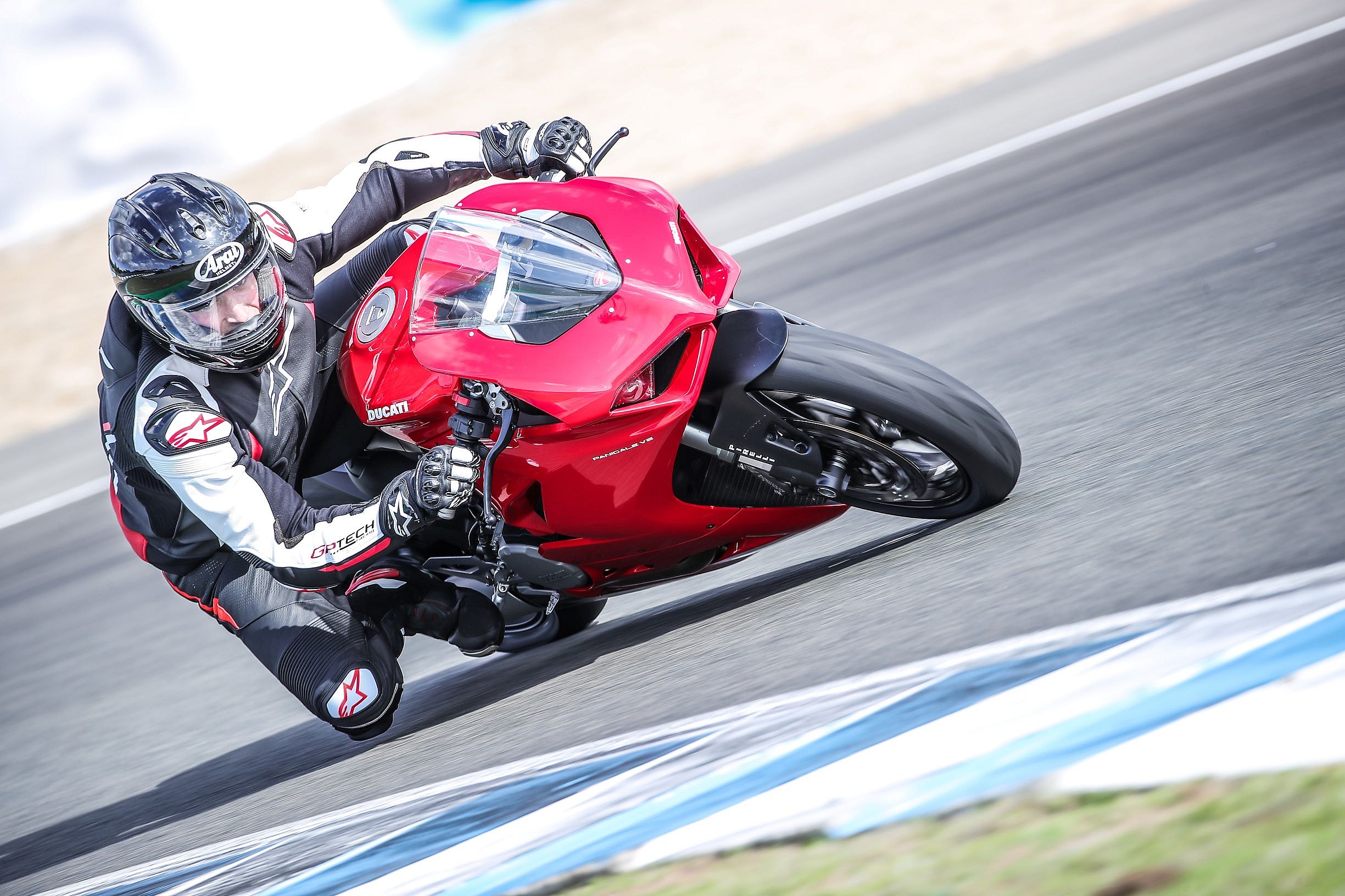
Evocative design, excess, and bravado are the three pillars of anything Italian with an engine and at least two wheels. Although the Italians would probably distill that even further and simply call it emozione. Nowhere is this more on display than the current lineup of Ducati superbikes, which now includes the 2020 Panigale V2.
Ducati has long been an ambassador to the world for Italian style and with the modern era of superbikes reaching new heights in power and capability, delegates from Bologna were always expected to be in attendance.
When Ducati introduced the range-topping Panigale V4, it was something of a watershed moment for the brand. The flagship motorcycle was dropping the brand’s signature L-twin engine in favor of a MotoGP-inspired V4 powerplant.
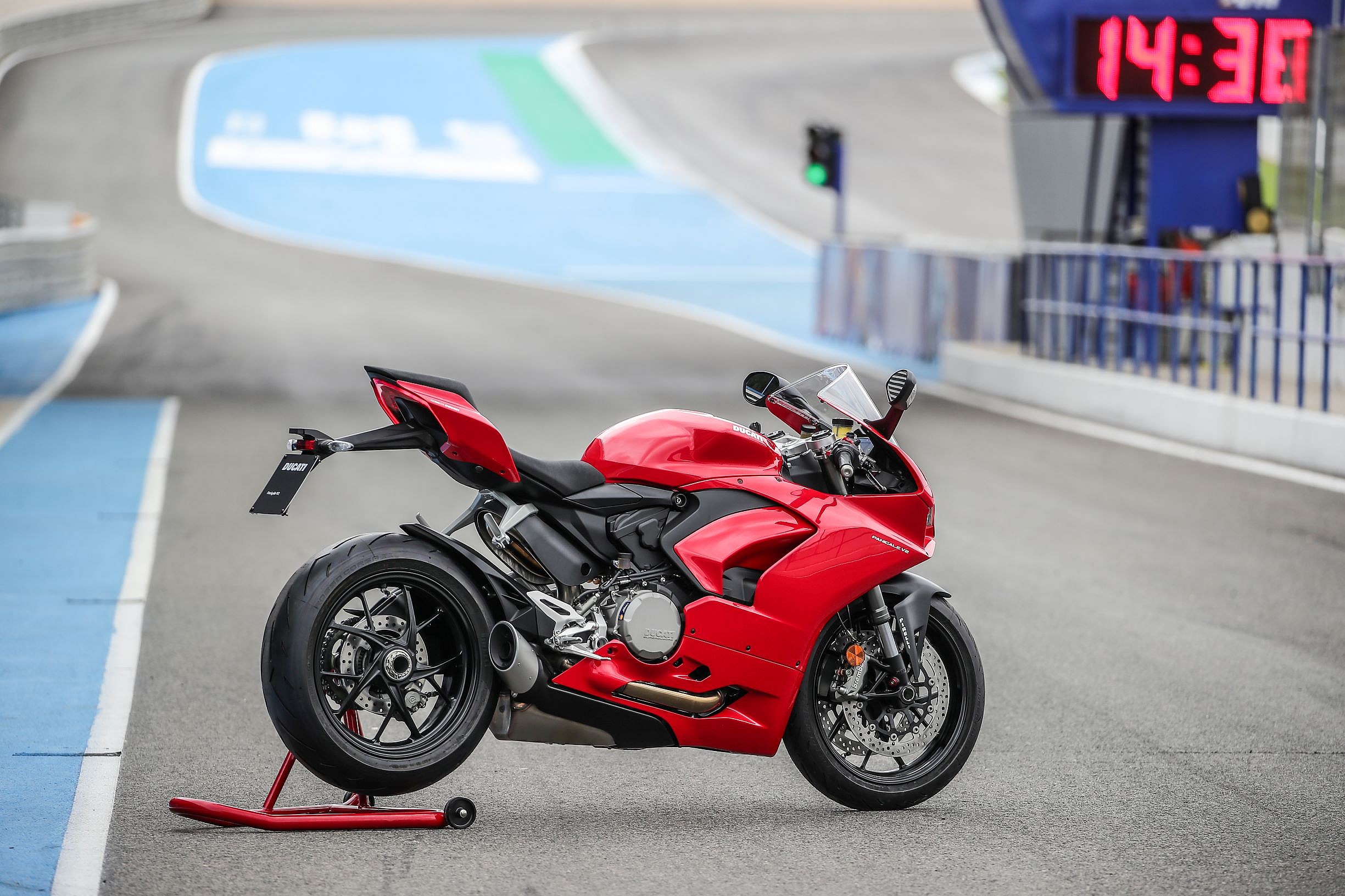
Normally, you’d expect the traditionalists to scoff at the idea of the slightest change, but the new engine was trickle-down engineering from the sacrosanct Ducati Corse. It’s papal law as far as the Ducatisti are concerned.
However, that left the mid-level Panigale 959 out in the cold a bit, seeing as how it was still going to use the L-twin layout and architecture. Ducati’s solution? Just change the name. Thus, the 959 enters the new era of Ducati superbikes as the new Panigale V2.
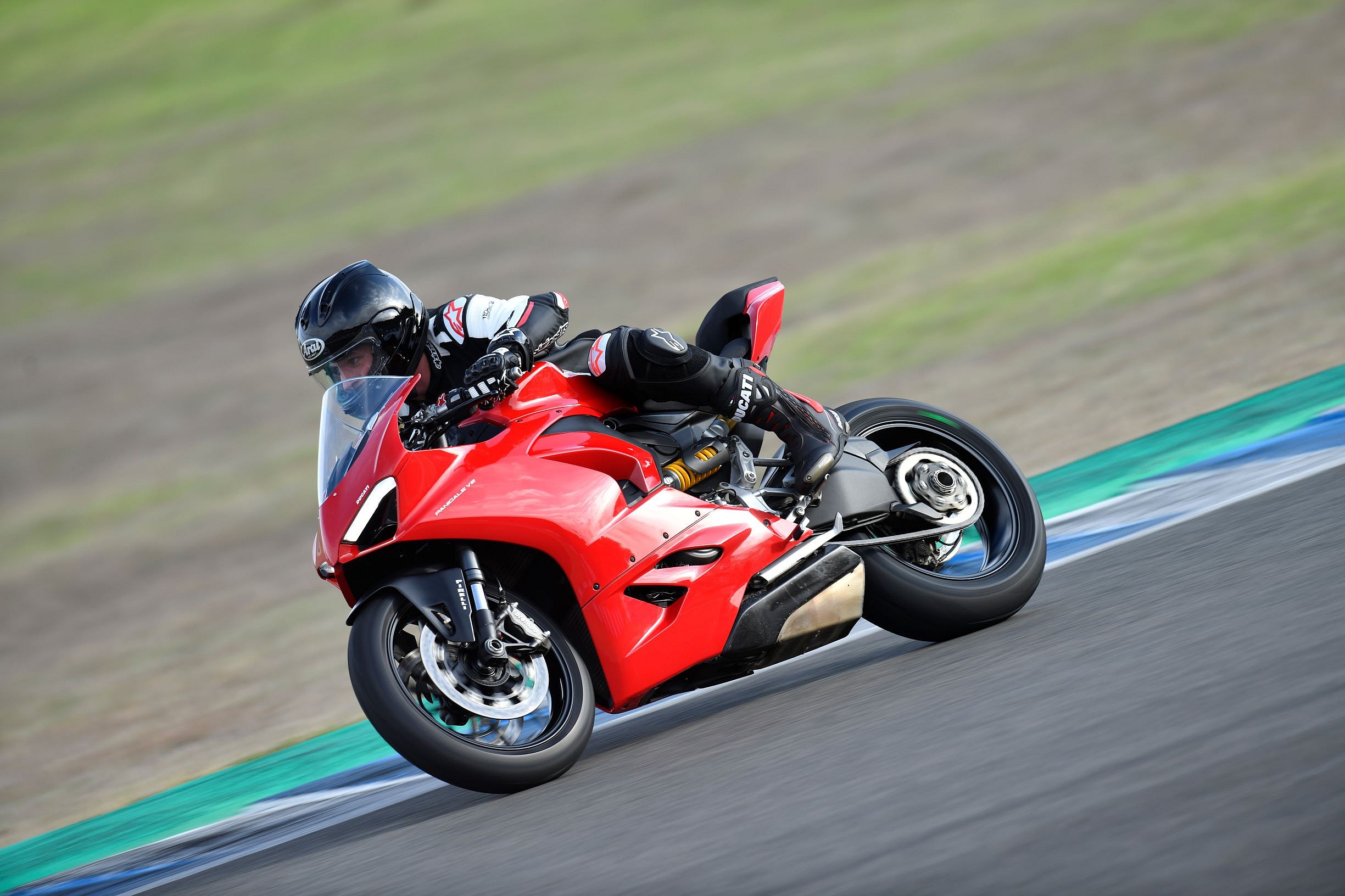
Notice I didn’t use the qualifier “all-new”. That’s because the V2 isn’t a ground-up, next-generation middleweight superbike from Ducati. In fact, in years past, the small changes made (aside from the name) would have earned this bike Ducati’s “Evo” designation. And although they are small changes, the additions make a surprising sizeable evolutionary step, and only for a price hike of around $2,000 to $16,495.
Underneath the redesigned scarlet red fairings lays the same frame and engine as the old 959, albeit with a few updates to the fuel injectors and air intake which help add a whole five horsepower over the outgoing model, totaling 155hp. It’s not much, but more power is not the answer in today’s market. With 99% of riders lacking the skills to properly make use of the bigger brother V4’s 214 rampant cavalli (myself included), giving the V2 a way to control its already sufficient 155hp rather than adding more was the sensible and responsible path. How un-Italian.
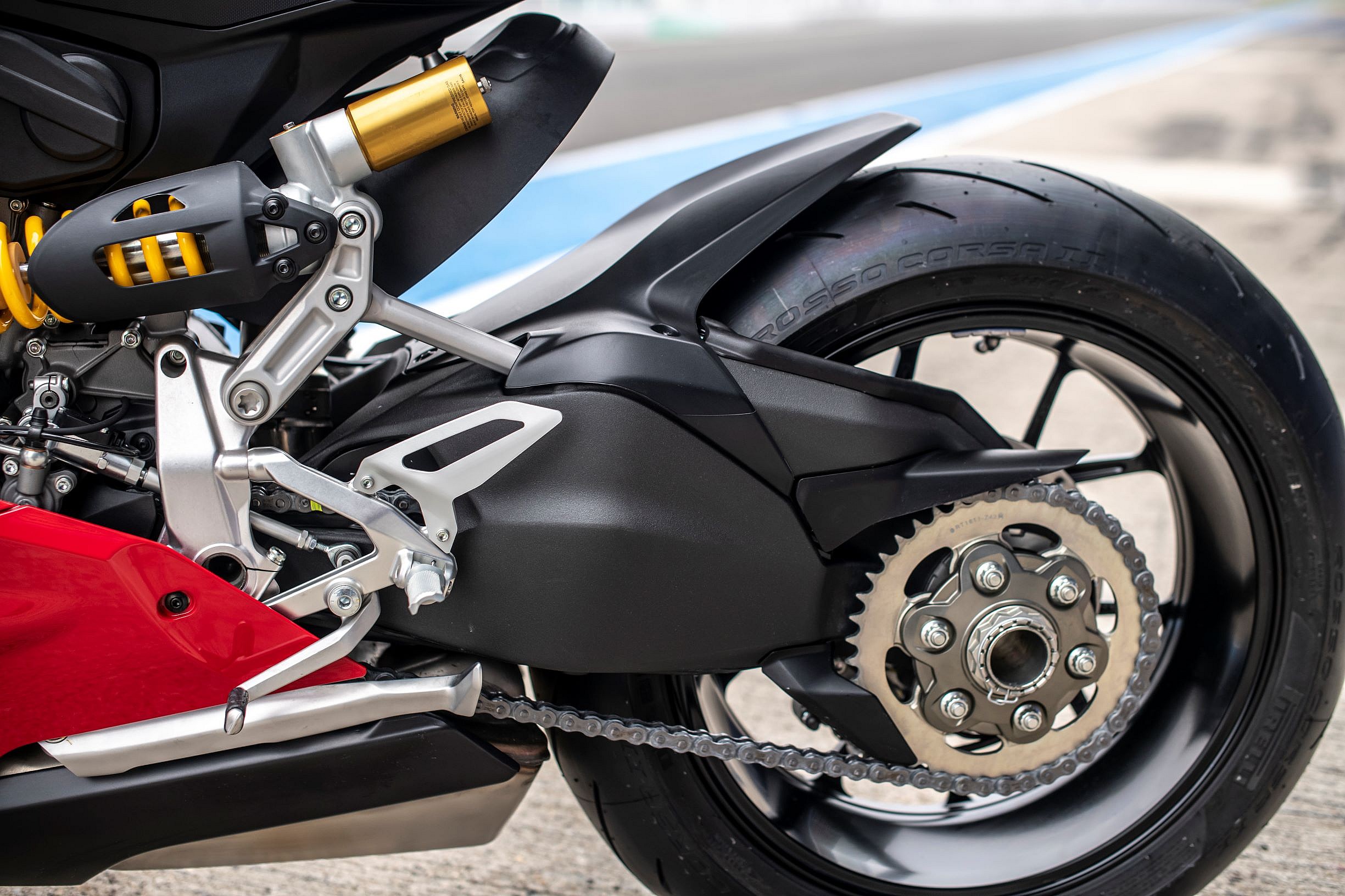
But out on track at Circuit de Jerez in Spain, where Ducati was hosting the V2 first-ride, it was clear the more subtle additions built into the V2 added up to transform the smallest of the brand’s superbikes into one of its most well-rounded and approachable.
The V2 borrows the whole electronic package from the V4, giving it an upscale 4.3-inch color TFT display, Cornering ABS EVO, Ducati Traction Control EVO 2, Ducati Wheelie Control EVO, Ducati Quick Shift up/down EVO 2, and Engine Brake Control EVO. Ducati engineers also raised the seat height, lowering the front end, and lengthened the seat itself for more room in the cockpit.
https://www.instagram.com/p/B45E99ql-op
All of this combined gives what, just a few years ago, would be considered a high-strung liter-bike, a more comfortable, confidence-inspiring ride especially for the population of riders intimidated by the 155 horsepower on tap.
That said, there’s an abundance of power everywhere in the rev range. Ducati ensured that 60% of the torque is available above 5,000rpms. On the track that translated to thrust out of every type of corner. However, even with a mountain of power at my fingertips coming from a 959cc engine, delivery came on as a rapid groundswell as opposed to the lightswitch personality of similar-size engined bikes.
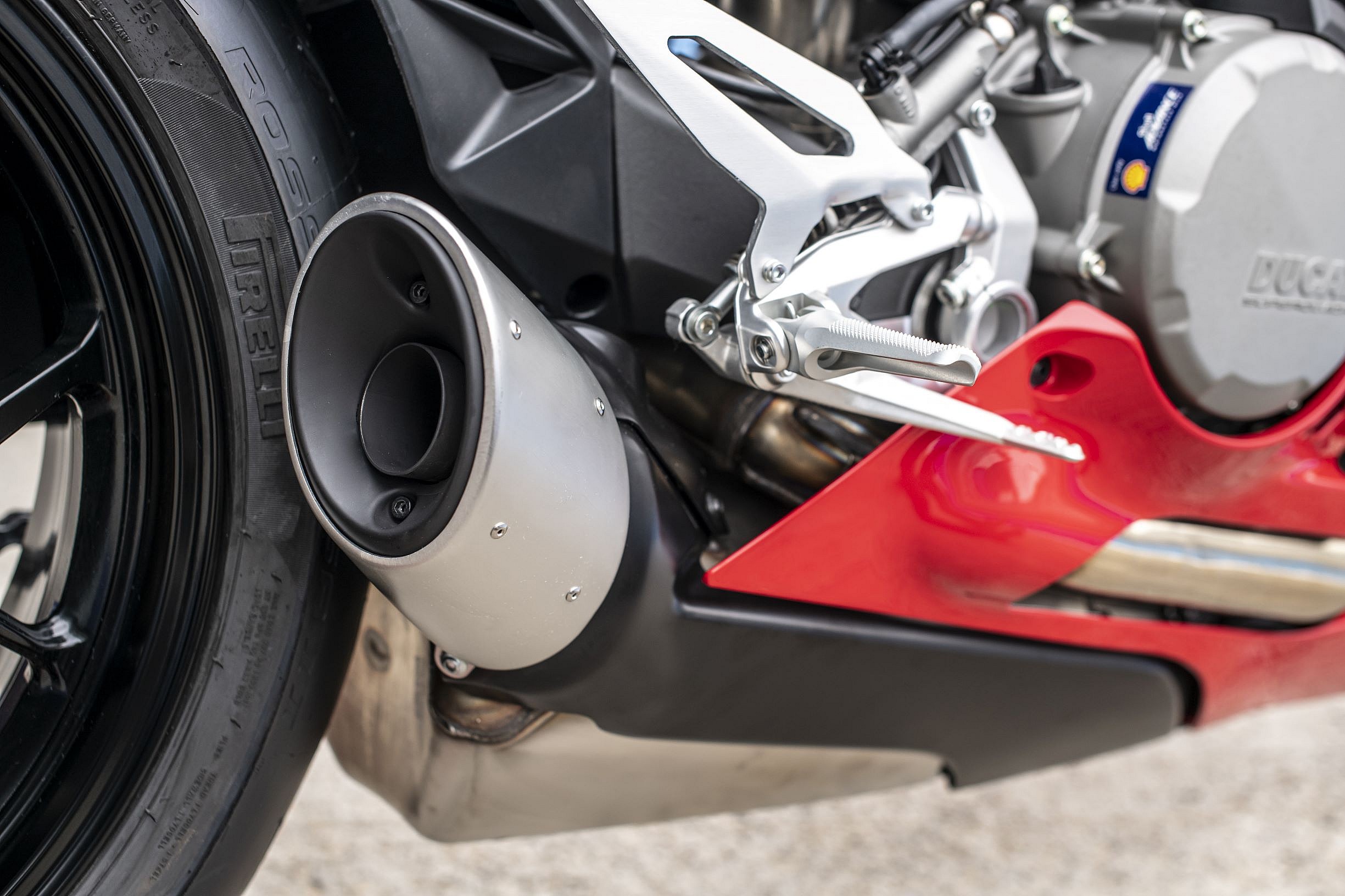
In the corners, with the weight bias engineered ever so slightly to the front, picking a line, following it, and changing direction felt natural at every speed. And, even when I made amateur hour mid-corner mistakes, or as adding the throttle smoothly became more difficult as the day wore on due to exhaustion, the bike’s brain didn’t care. Where I faltered, the V2 picked up the pieces.
Will the V2 perform in the real world, away from silky smooth MotoGP and F1-grade tarmac like at Jerez? Will it cope with light-to-light traffic, starving for cooling airflow? I can’t say, as the entire test was on-track. Keep in mind superbikes in everyday riding conditions are compromised.
They’re designed for places like Jerez, where you can safely and confidently drag a knee in the corners and regularly flirt with the rev-limiter in each gear. Ironically, it might be the high-end electronics package from the high-strung V4 that gives the V2 an edge on public roads. The power is manageable and can be reigned in even further by the onboard computer.
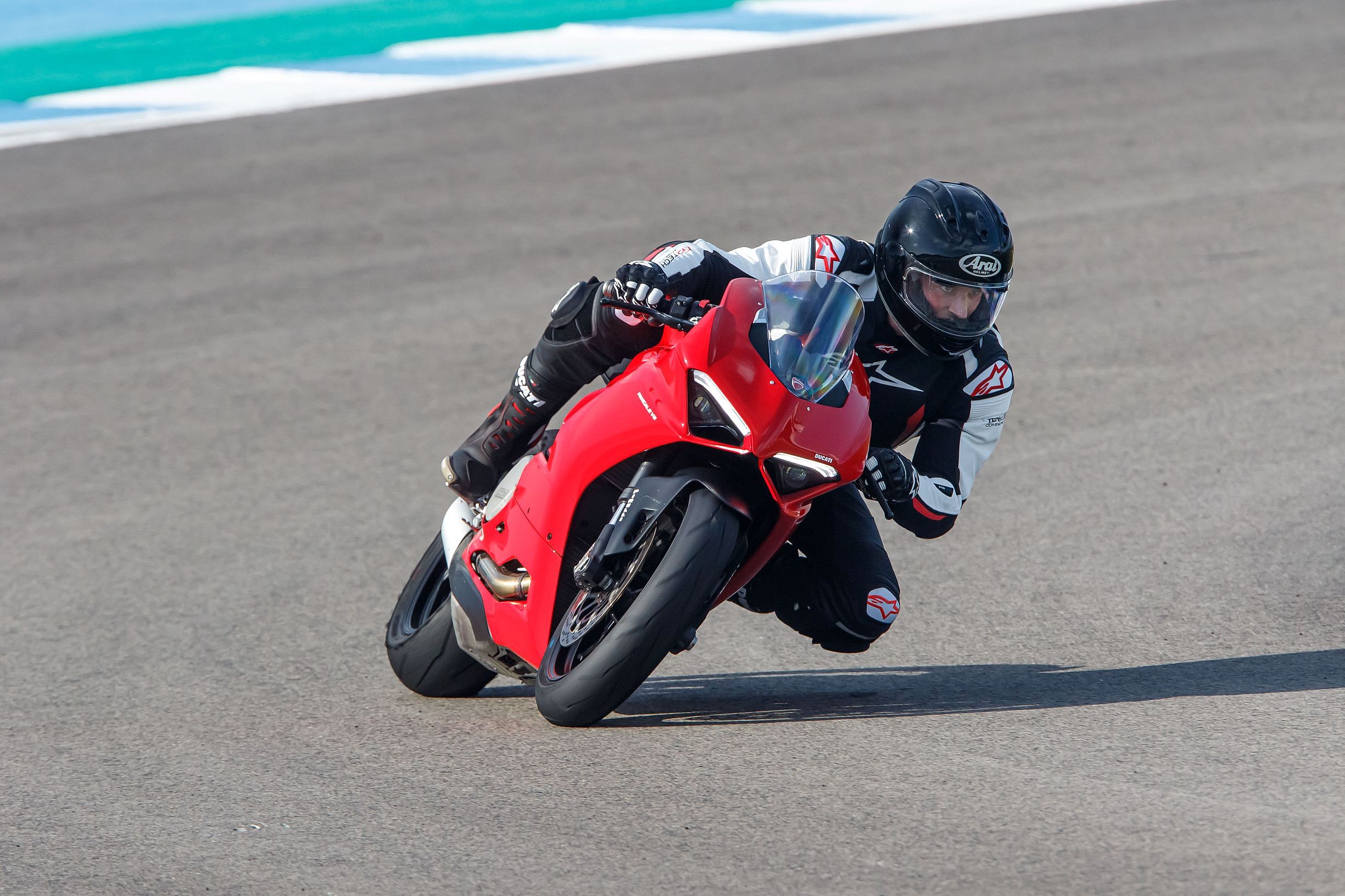
You still get the classically Italian evocative design and bravado from the V2, but also a level of maturity in reigning in that excess. The Panigale V2 can handle itself on track and hints it can cut it on the road, which might make it one of Ducati’s most well-rounded superbike ambassadors in years.
